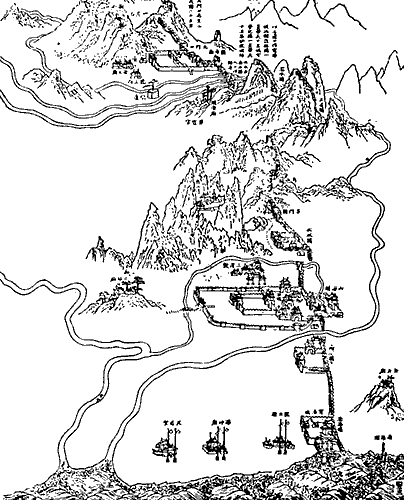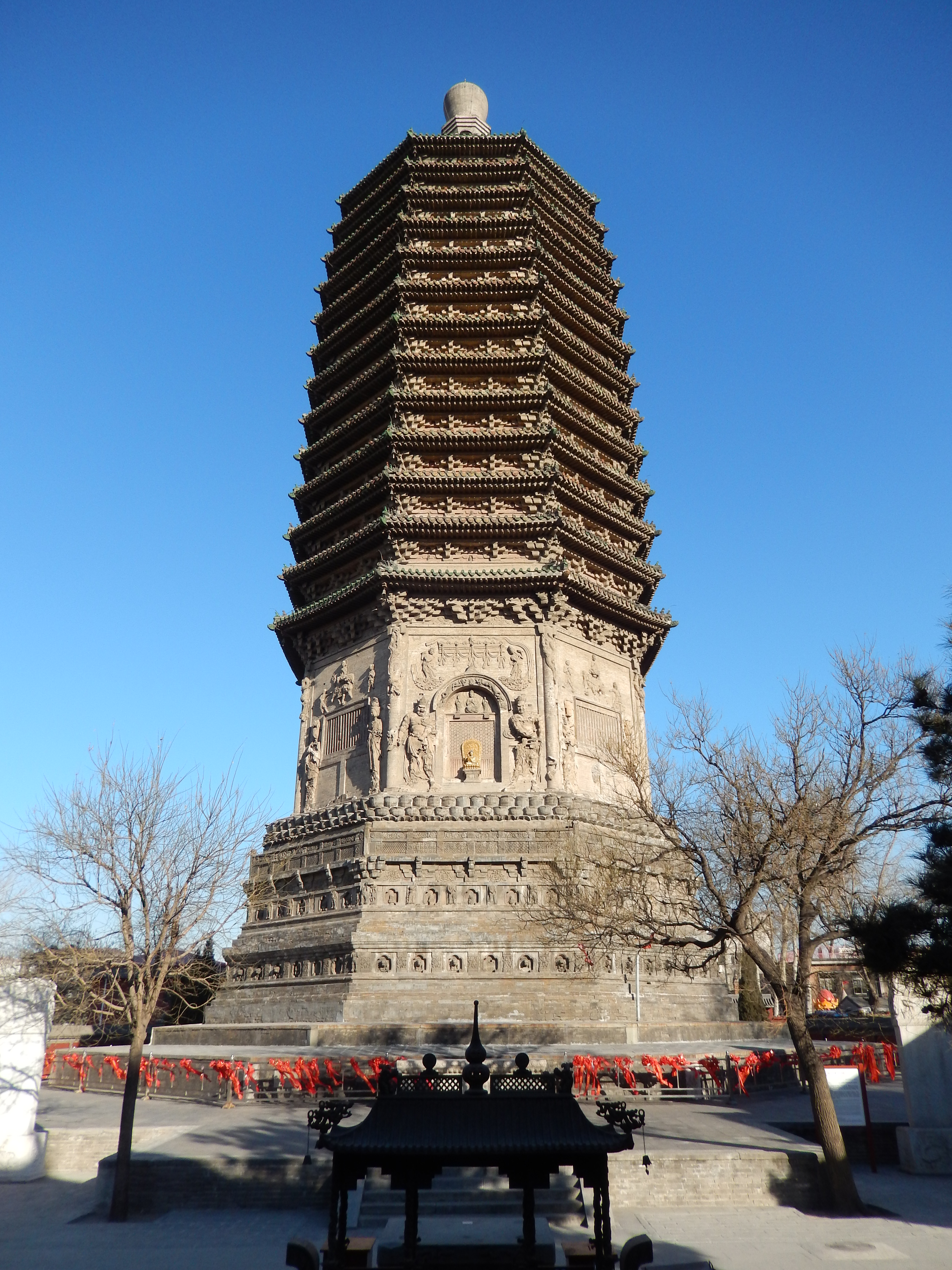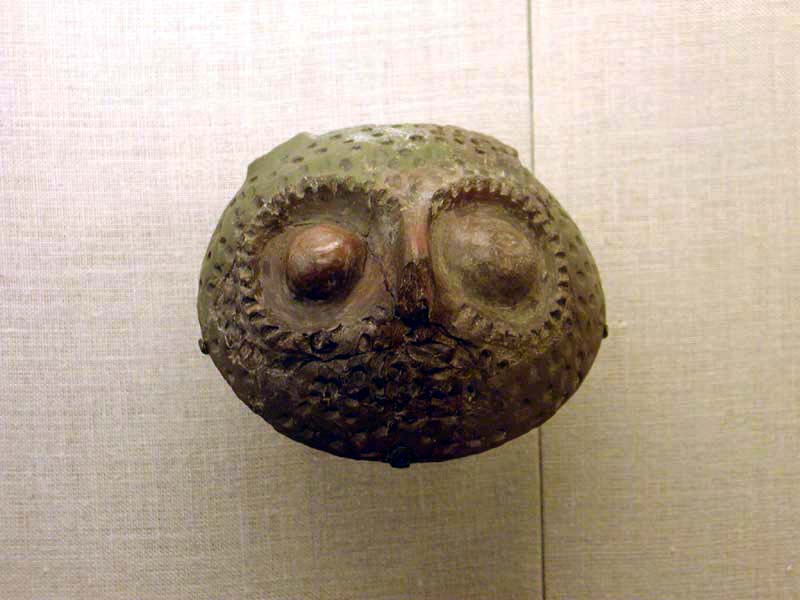|
Li Zicheng
Li Zicheng (22 September 1606 – 1645), born Li Hongji, also known by the nickname, Dashing King, was a Chinese peasant rebel leader who overthrew the Ming dynasty in 1644 and ruled over northern China briefly as the emperor of the short-lived Shun dynasty before his death a year later. Biography Li Zicheng was born in 1606 as Li Hongji to an impoverished family of farmers in Li Jiqian village, Yan'an prefecture, northeast Shaanxi province. Li Zicheng had a brother who was 20 years his senior and raised Li Zicheng alongside his son and Zicheng’s nephew, Li Guo. While Li Zicheng was literate, the source of his education is disputed. Over the course of his late adolescence and early adulthood, Li worked on a farm, in a wine shop, in a blacksmith's shop, and as a mailman for the state courier system. According to folklore, in 1630, Li was put on public display in an iron collar and shackles for failing to repay loans to a usurious magistrate. The magistrate, a man by the nam ... [...More Info...] [...Related Items...] OR: [Wikipedia] [Google] [Baidu] |
Mizhi County
Mizhi County () is a county of Yulin, Shaanxi, China. Mizhi is situated in the Loess Plateau on the banks of Wuding River. The county is established in 1226, named after Mizhizhai (Mizhi Stockade). It was renamed Tianbao in about 1643 by Li Zicheng, but was restored as Mizhi soon. Also, Li built his temporary palace in the county. During the second Sino-Japanese war, it was administered by the Shaanxi-Gansu-Ningxia Border Region government. Administrative divisions As 2019, Mizhi County is divided to 1 subdistricts and 7 towns. ;Subdistricts * Yinzhou Subdistrict () ;Towns Climate Transportation *China National Highway 210 China National Highway 210 (G210) runs from Mandula in Baotou, Inner Mongolia to Fangchenggang, Guangxi. It is 3,097 kilometres in length and runs south from Baotou and passes through the province-level divisions of Shaanxi, Sichuan, Chongqing, ... Notes and references References County-level divisions of Shaanxi Yulin, Shaanxi {{Sha ... [...More Info...] [...Related Items...] OR: [Wikipedia] [Google] [Baidu] |
Battle Of Shanhai Pass
The Battle of Shanhai Pass, fought on May 27, 1644 at Shanhai Pass at the eastern end of the Great Wall, was a decisive battle leading to the beginning of the Qing dynasty rule in China proper. There, the Qing prince-regent Dorgon allied with former Ming general Wu Sangui to defeat rebel leader Li Zicheng of the Shun dynasty, allowing Dorgon and the Qing army to rapidly conquer Beijing. Prelude Rise of the Manchus As the Ming dynasty declined, and the threat from northern enemies grew, Ming emperors saw the strategic value of Shanhai Pass and frequently garrisoned troops there, armies which sometimes reached up to 40,000 men. Under the rule of Hong Taiji (r. 1626–1643), the Qing were becoming more aggressive against the Ming. After an intermittent siege that lasted over ten years, Qing armies led by Jirgalang captured Songshan and Jinzhou in early 1642. The garrison of Ming general Wu Sangui in Ningyuan became the only major army standing between the Qing forces ... [...More Info...] [...Related Items...] OR: [Wikipedia] [Google] [Baidu] |
Beijing
} Beijing ( ; ; ), alternatively romanized as Peking ( ), is the capital of the People's Republic of China. It is the center of power and development of the country. Beijing is the world's most populous national capital city, with over 21 million residents. It has an administrative area of , the third in the country after Guangzhou and Shanghai. It is located in Northern China, and is governed as a municipality under the direct administration of the State Council with 16 urban, suburban, and rural districts.Figures based on 2006 statistics published in 2007 National Statistical Yearbook of China and available online at archive. Retrieved 21 April 2009. Beijing is mostly surrounded by Hebei Province with the exception of neighboring Tianjin to the southeast; together, the three divisions form the Jingjinji megalopolis and the national capital region of China. Beijing is a global city and one of the world's leading centres for culture, diplomacy, politics, financ ... [...More Info...] [...Related Items...] OR: [Wikipedia] [Google] [Baidu] |
Southern Ming
The Southern Ming (), also known as the Later Ming (), officially the Great Ming (), was an imperial dynasty of China and a series of rump states of the Ming dynasty that came into existence following the Jiashen Incident of 1644. Shun forces led by Li Zicheng captured Beijing and the Chongzhen Emperor committed suicide. The Ming general Wu Sangui then opened the gates of the Shanhai Pass in the eastern section of the Great Wall to the Qing banners, in hope of using them to annihilate the Shun forces. Ming loyalists fled to Nanjing, where they enthroned Zhu Yousong as the Hongguang Emperor, marking the start of the Southern Ming. The Nanjing regime lasted until 1645, when Qing forces captured Nanjing. Zhu fled before the city fell, but was captured and executed shortly thereafter. Later figures continued to hold court in various southern Chinese cities, although the Qing considered them to be pretenders. The Nanjing regime lacked the resources to pay and supply its s ... [...More Info...] [...Related Items...] OR: [Wikipedia] [Google] [Baidu] |
Xiangyang
Xiangyang is a prefecture-level city in northwestern Hubei province, China and the second largest city in Hubei by population. It was known as Xiangfan from 1950 to 2010. The Han River runs through Xiangyang's centre and divides the city north–south. The city itself is an agglomeration of two once separate cities: Fancheng and Xiangyang (or Xiangcheng), and was known as Xiangfan before 2010. What remains of old Xiangyang is located south of the Han River and contains one of the oldest still-intact city walls in China, while Fancheng is located to the north of the Han River. Both cities served prominent historical roles in both ancient and pre-modern Chinese history. Today, the city has been a target of government and private investment as the country seeks to urbanize and develop the interior provinces. Its built-up area made up of 3 urban districts had 2,319,640 inhabitants at the 2020 census while the whole municipality contained approximately 5,260,951 people. History ... [...More Info...] [...Related Items...] OR: [Wikipedia] [Google] [Baidu] |
Manchu
The Manchus (; ) are a Tungusic East Asian ethnic group native to Manchuria in Northeast Asia. They are an officially recognized ethnic minority in China and the people from whom Manchuria derives its name. The Later Jin (1616–1636) and Qing (1636–1912) dynasties of China were established and ruled by the Manchus, who are descended from the Jurchen people who earlier established the Jin dynasty (1115–1234) in northern China. Manchus form the largest branch of the Tungusic peoples and are distributed throughout China, forming the fourth largest ethnic group in the country. They can be found in 31 Chinese provincial regions. Among them, Liaoning has the largest population and Hebei, Heilongjiang, Jilin, Inner Mongolia and Beijing have over 100,000 Manchu residents. About half of the population live in Liaoning and one-fifth in Hebei. There are a number of Manchu autonomous counties in China, such as Xinbin, Xiuyan, Qinglong, Fengning, Yitong, Qingyuan, Weichang, Kua ... [...More Info...] [...Related Items...] OR: [Wikipedia] [Google] [Baidu] |
Kaifeng
Kaifeng () is a prefecture-level city in east-central Henan province, China. It is one of the Eight Ancient Capitals of China, having been the capital eight times in history, and is best known for having been the Chinese capital during the Northern Song dynasty. As of 31 December 2018, around 4,465,000 people lived in Kaifeng's Prefecture, of whom 1,652,000 lived in the built-up (or metro) area made of Xiangfu, Longting, Shunhe Hui, Gulou and Yuwantai Districts. Located along the Yellow River's southern bank, it borders the provincial capital of Zhengzhou to the west, Xinxiang to the northwest, Shangqiu to the east, Zhoukou to the southeast, Xuchang to the southwest, and Heze of Shandong to the northeast. Kaifeng is also a major city in the world by scientific research outputs as tracked by the Nature Index. The city is home to a campus of Henan University, one of the national key universities in the Double First Class University Plan. Names The postal romanization ... [...More Info...] [...Related Items...] OR: [Wikipedia] [Google] [Baidu] |
Yellow River
The Yellow River or Huang He (Chinese: , Mandarin: ''Huáng hé'' ) is the second-longest river in China, after the Yangtze River, and the sixth-longest river system in the world at the estimated length of . Originating in the Bayan Har Mountains in Qinghai province of Western China, it flows through nine provinces, and it empties into the Bohai Sea near the city of Dongying in Shandong province. The Yellow River basin has an east–west extent of about and a north–south extent of about . Its total drainage area is about . The Yellow River's basin was the birthplace of ancient Chinese, and, by extension, Far Eastern civilization, and it was the most prosperous region in early Chinese history. There are frequent devastating floods and course changes produced by the continual elevation of the river bed, sometimes above the level of its surrounding farm fields. Etymology Early Chinese literature including the '' Yu Gong'' or ''Tribute of Yu'' dating to the ... [...More Info...] [...Related Items...] OR: [Wikipedia] [Google] [Baidu] |
1642 Kaifeng Flood
The 1642 Yellow River flood or Kaifeng flood was a man-made disaster in October, 1642, that principally affected Kaifeng and Xuzhou. Kaifeng is located on the south bank of the Yellow River, prone to violent flooding throughout its history. During the early Ming dynasty, the town was the site of major floods in 1375, 1384, 1390, 1410, and 1416.Tsai, Shih-Shan Henry. ''SUNY Series in Chinese Local Studies'': The Eunuchs in the Ming Dynasty'. SUNY Press, 1996. , 9780791426876. Accessed 16 Oct 2012. By the mid-15th century, the Ming had completed restoration of the area's flood-control system and operated it with general success for over a century. The 1642 flood, however, was not natural, but directed by the Ming governor of the city in the hopes of using the floodwaters to break the six-month siege the city had endured from the peasant rebels led by Li Zicheng. The dikes were burst in an attempt to flood the rebels, but the water destroyed Kaifeng. According to another account, ... [...More Info...] [...Related Items...] OR: [Wikipedia] [Google] [Baidu] |
Shanxi
Shanxi (; ; formerly romanised as Shansi) is a landlocked province of the People's Republic of China and is part of the North China region. The capital and largest city of the province is Taiyuan, while its next most populated prefecture-level cities are Changzhi and Datong. Its one-character abbreviation is "" (), after the state of Jin that existed there during the Spring and Autumn period. The name ''Shanxi'' means "West of the Mountains", a reference to the province's location west of the Taihang Mountains. Shanxi borders Hebei to the east, Henan to the south, Shaanxi to the west and Inner Mongolia to the north. Shanxi's terrain is characterised by a plateau bounded partly by mountain ranges. Shanxi's culture is largely dominated by the ethnic Han majority, who make up over 99% of its population. Jin Chinese is considered by some linguists to be a distinct language from Mandarin and its geographical range covers most of Shanxi. Both Jin and Mandarin are spoken in ... [...More Info...] [...Related Items...] OR: [Wikipedia] [Google] [Baidu] |
Henan
Henan (; or ; ; alternatively Honan) is a landlocked province of China, in the central part of the country. Henan is often referred to as Zhongyuan or Zhongzhou (), which literally means "central plain" or "midland", although the name is also applied to the entirety of China proper. Henan is a birthplace of Han Chinese civilization, with over 3,200 years of recorded history and remained China's cultural, economic and political center until approximately 1,000 years ago. Henan Province is home to many heritage sites, including the ruins of Shang dynasty capital city Yin and the Shaolin Temple. Four of the Eight Great Ancient Capitals of China, Luoyang, Anyang, Kaifeng and Zhengzhou, are in Henan. The practice of tai chi also began here in Chen Jia Gou Village (Chen style), as did the later Yang and Wu styles. Although the name of the province () means "south of the ellowriver.", approximately a quarter of the province lies north of the Yellow River, also known as th ... [...More Info...] [...Related Items...] OR: [Wikipedia] [Google] [Baidu] |








